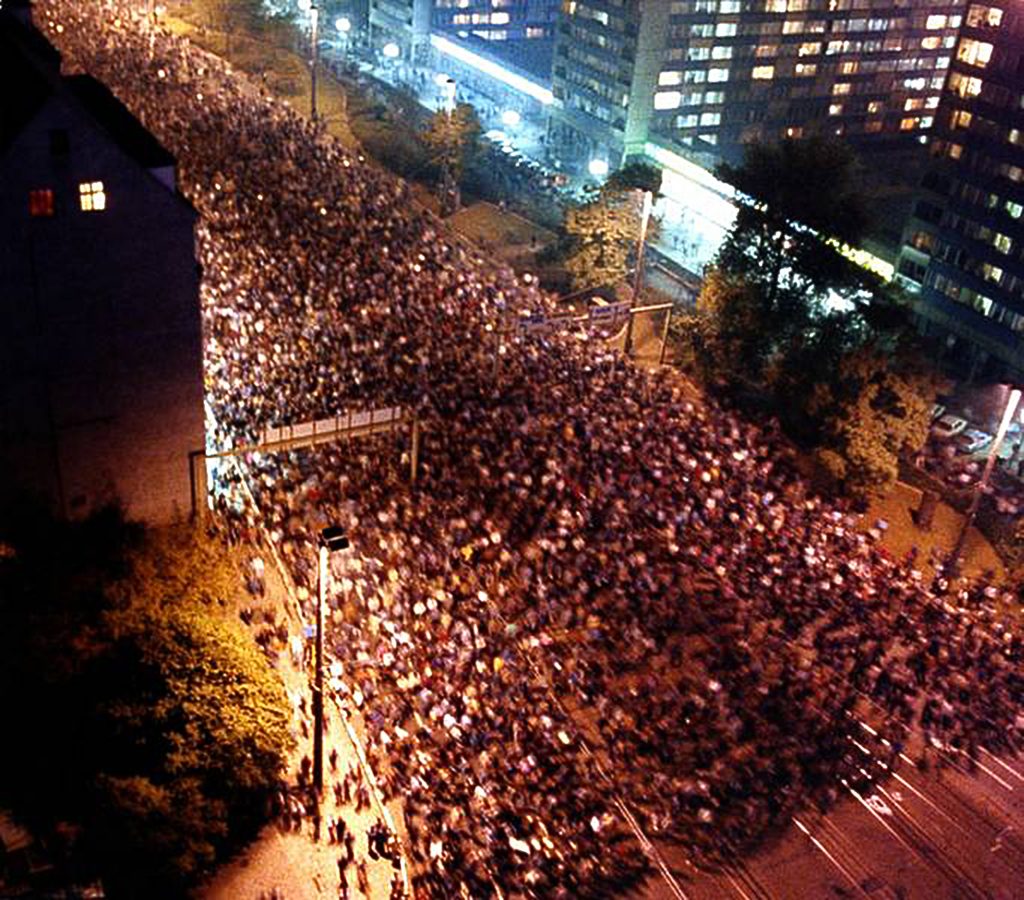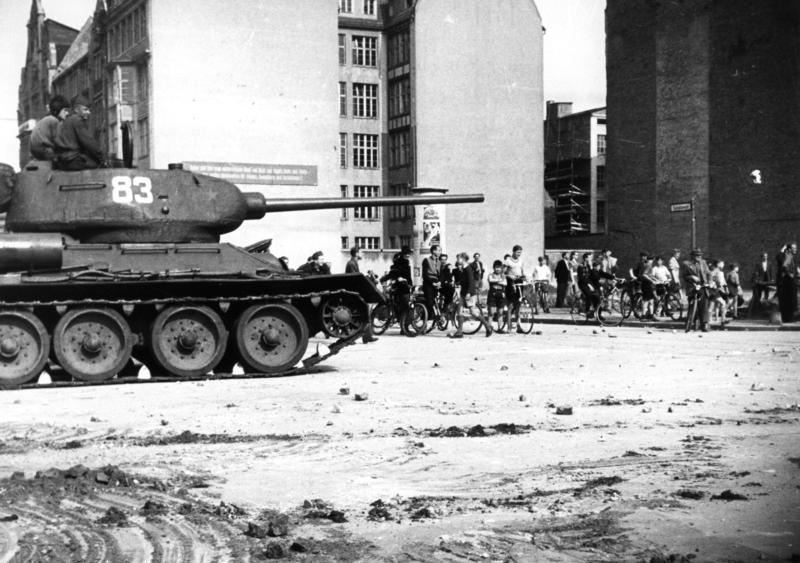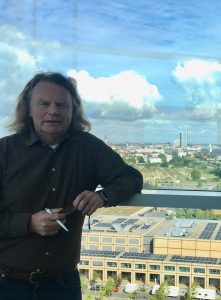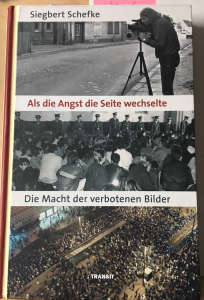Does anyone need a story of encouragement? October 9 holds such a story, one based in the courage that comes from facing fear and overcoming it.

October 9, 1989 is the day that “fear switched sides,” which is also the title of a book by Siegbert (Siggi) Schefke, one of the East German dissidents who was instrumental in the Peaceful Revolution. I recently met Siggi in Leipzig, the city of the huge peaceful protest march that day that signaled a sea change in the struggle of East Germans for democracy.
There had been other, smaller marches in the weeks leading up to October 9, not only in Leipzig but also in Berlin. Police had intervened and violently beat protesters for daring to demand free elections and the freedom to travel. Anyone old enough to remember the last big uprising – in 1953 – also remembered how brutally it had been beaten down by East German police and military, backed up by Soviet tanks.

Protesters in the fall of 1989 were also well aware that their government had just lavishly praised the “Chinese solution” – the deadly response of the Chinese government to peaceful protests in Beijing in June 1989.
East Germans thus had every reason to assume that their government would unleash the full force of the police and military on anyone who dared to march on October 9.
Siggi was 30 years old at the time, living in (East) Berlin, and had been working in the underground opposition for years. For the Stasi– the East German secret police – he and his dissident friends were “hostile elements.”
Undaunted, and knowing that Stasi agents were closely watching his apartment, Siggi was making plans to go to Leipzig on October 9 and secretly film the protest – whether to document a bloodbath or a peaceful event, only time would tell.
“They followed me to the bakery, to my girlfriend’s place, everywhere,” he remembers. “And when I went home, they positioned themselves in the courtyard and smoked. I knew I had to shake them off somehow, and I did that by setting up timers, one for a floor lamp and one for my TV. And then I climbed up to the top of the building and ran along the roofs of ten houses, climbed back down and met up with my friend Aram Radomski.”
Aram was waiting with his Trabant and the two took off, but before they even got out of Berlin they sensed they were being followed. Siggi’s story of how they abandoned the car and shook off the Stasi men by jumping on a tram sounds like straight out of a movie.
How easily their plan could have gone array, I think to myself. Had Siggi not been able to leave his apartment unnoticed, had he and Aram not caught that tram at the last minute, had they been stopped on the way to Leipzig, had they been arrested walking around there with the video camera… the world would not have known about the miracle of Leipzig, as many came to think of it afterwards.
“And then on the road to Leipzig,” Siggi continues, “we saw several police convoys going in the same direction. We could guess what they were for, and we both got very quiet for the rest of the ride.”
Could I have continued? Like so many times before on this expedition, the geographical accident of my birth on the western side of the German-German border stares me in the face. I never had to face a decision like the one Aram and Siggi faced that day, or any of the East Germans who were standing up to their repressive government.
The atmosphere in the city was tense. Hospitals had been supplied with extra blood units, medical staff was prohibited from taking time off, police and army personnel were taking position. Throughout the day, prominent Leipzigers got on the radio waves to implore their fellow citizens to remain peaceful, to not let themselves be provoked into violence.
Meanwhile, Siggi and Aram had to find a vantage point with an unobstructed view of Leipzig’s ring road, along which the march would lead.

“Today it would be so easy to get aerial footage with a drone,” Siggi laughs, “but that was 1989, so we had to find an elevated spot high up above the crowd, one where we couldn’t be seen.”
Eventually, they got access to the spire of the Reformed Church, which overlooked the ring road. Night was falling as Siggi and Aram set up the camera, careful to conceal the red battery light from Stasi eyes looking out from the high-rise down the street.
“And then we could hear the crowd approaching,” Siggi tells me. “And that was really an amazing feeling, to see these masses of people and to hear them chanting: ‘We are the people’, ‘No violence,’ ‘Allow the New Forum’ [a newly formed political party], ‘We are no rowdies’ – that was because in response to the previous marches, the state media had claimed that only a few rowdies were disturbing the public peace.”
Once the crowd had passed the church, the ring road would take them past the regional Stasi headquarters. If the police and military did not take action there, chances were they had been ordered not to get involved at all.
And so it was. The crowd completed its march around the ring road without incident, Siggi and Aram climbed down the church tower and discreetly handed the video tape to a West German journalist who was waiting for them at a hotel and crossed to West Berlin later that night.
“And the next evening, we saw our images on West German TV, along with millions of people in East and West. After that, the protests only grew. And four weeks later, the Berlin Wall opened and we knew, the GDR is a total loss.”
Listening to Siggi, I marvel once again how unpredictably history unfolds, how little is preordained, how many moments had to go “right” and how many people had to overcome their fear for the Peaceful Revolution to unfold as it did.
For more on this, two reading recommendations:



Thank you for this inspiring post! This is also the 101st birthday of my mother. It’s wonderful that she shares an anniversary with the 1989, march in Leipzig.
What an auspicious day – happy birthday to your mother!
I can sense what must have been in the air when that rooftop photo was taken. I’m glad things resolved peacefully.
Yes, courage and steadfastness are key elements of successful leadership in any movement towards meaningful change.
Such rugged determination and courage of the videographers and of all who marched on that day. Thank you for this story, Kerstin- a true inspiration.